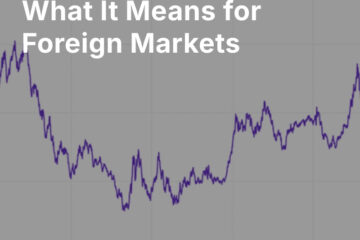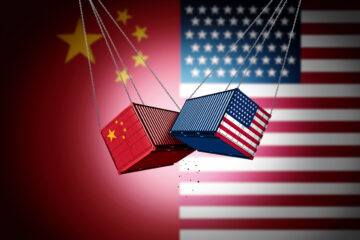Last week we reported about two large stakes taken in Indian telecom giant Reliance Jio by U.S. investors. Their interest focused particularly on the Indian consumer, one of the world’s great untapped consumer markets. Jio’s aggressive rollout of cheap internet service and mobile devices to currently unconnected Indians attracted a large investment by Facebook [NASDAQ: FB], who clearly hope to parlay WhatsApp into a payments and e-commerce platform, following what Tencent [OTC: TCEHY] has done with WeChat in China.
More broadly, India stands to benefit from the tensions between the United States and China, which under the pressure of the COVID pandemic seem to be heating up again. One of the lasting effects of the pandemic may be the extent to which it solidifies the perceived need for supply chain diversification away from China, for both political and economic reasons.
Attracting foreign manufacturing to India has long been one of the goals of Indian Prime Minister Narendra Modi, who played a critical role in encouraging manufacturing in the Indian state of Gujarat during his tenure as that state’s chief minister. India’s leaders recognize that the path to development leads inexorably through manufacturing – as enticing as the Indian consumer may be to foreign tech and e-commerce firms, it is making India a desirable and workable manufacturing destination that will create long-term prosperity for the country.
There are signs that India is taking the emerging bipolar tensions between China and the United States as an opportunity. Anonymous sources inside the Indian government have said that the states of Gujarat, Maharashtra, Tamil Nadu, and Andhra Pradesh are amassing nearly 1,800 square miles of land to be used to entice foreign manufacturers to leave China.
Historically, acquiring land for manufacturing has been painfully difficult for foreigners (indeed, it’s difficult even for Indians), who have had to deal with the resistance of small plot owners and often with an intractable backlog of title cases in Indian courts. This has hindered foreign investment in spite of the presence of an educated workforce. The land bank being assembled by the government will include water, power, and road access, and will be targeted at specific sectors, including electrical, pharmaceuticals, medical devices, electronics, heavy engineering, solar equipment, food processing, chemicals and textiles. Indian embassies will be appealing particularly to U.S., Japanese, and South Korean firms.
Separately, the Indian government’s incentives to mobile handset manufacturers have led Apple [NASDAQ: AAPL] to plan the relocation of up to 20% of its iPhone manufacturing capacity to India, according to reports. Other handset manufacturers, including Samsung [OTC: SSNLF], are said to be considering similar moves. The new incentive program kicks off on August 1.
Investment implications: While trade and political tensions have been high between the U.S. and China for some time, the COVID pandemic may prove to be a decisive force clinching the restructuring of global supply chains, especially in tech, away from China. Some reshoring to the U.S. will occur, as is being discussed by some semiconductor manufacturers. But if India can continue its slow-and-steady movement to a more open and business friendly stance under its current leaders, it will be able to seize a significant amount of China’s lost business. Again, while there will be many ups and downs, we regard India as one of the world’s best secular growth stories – both for manufacturing and for consumer-oriented industries.



